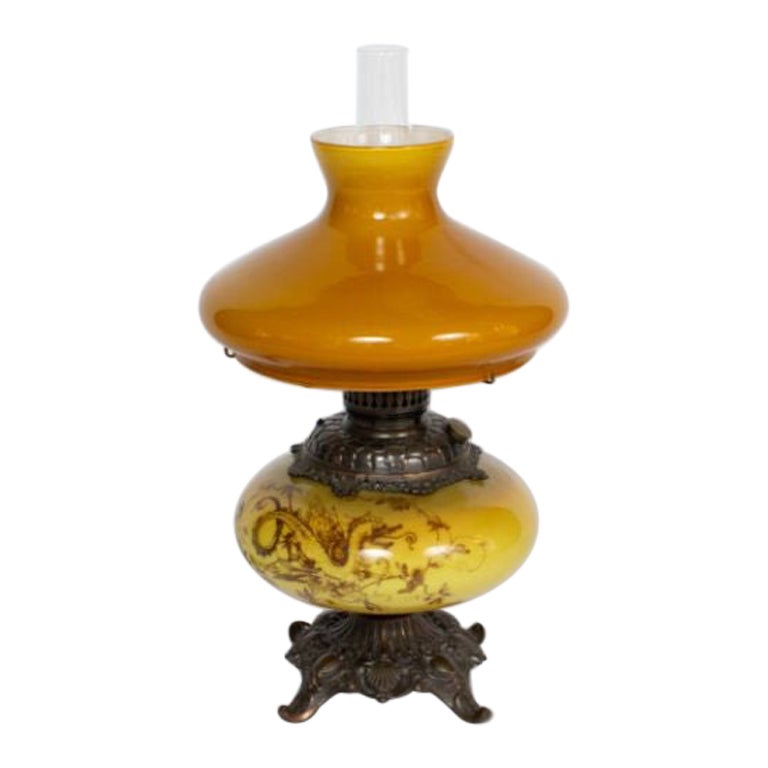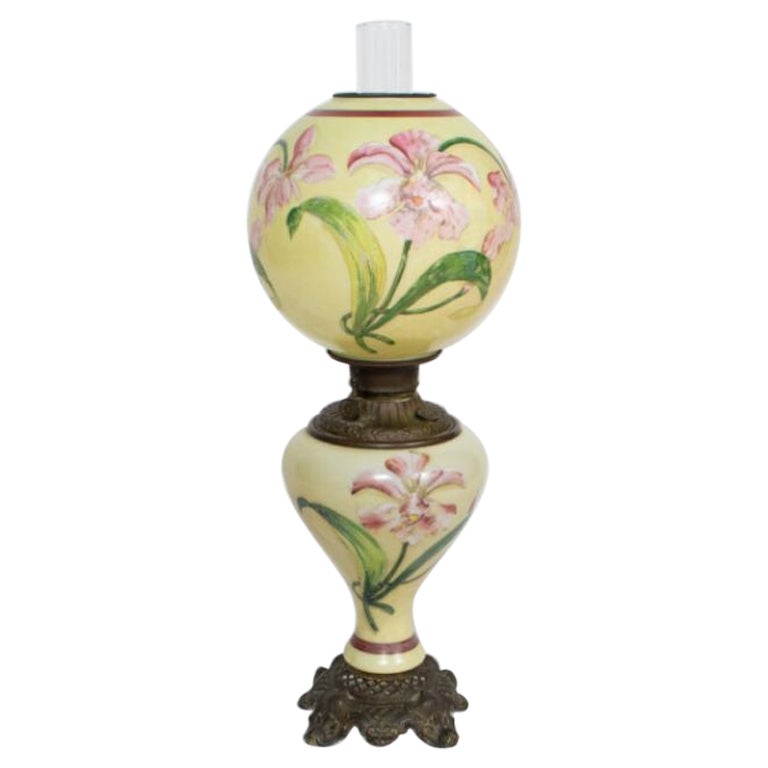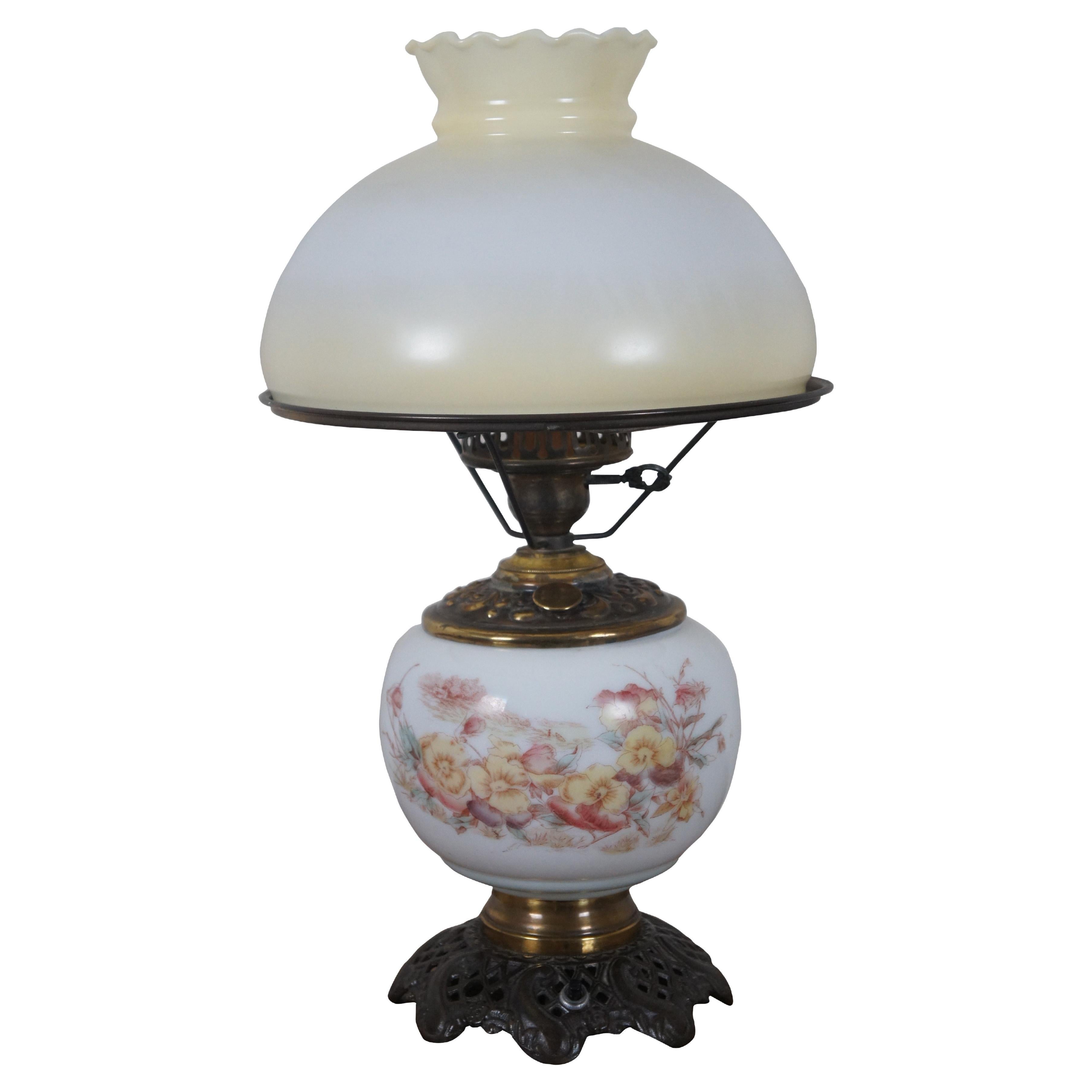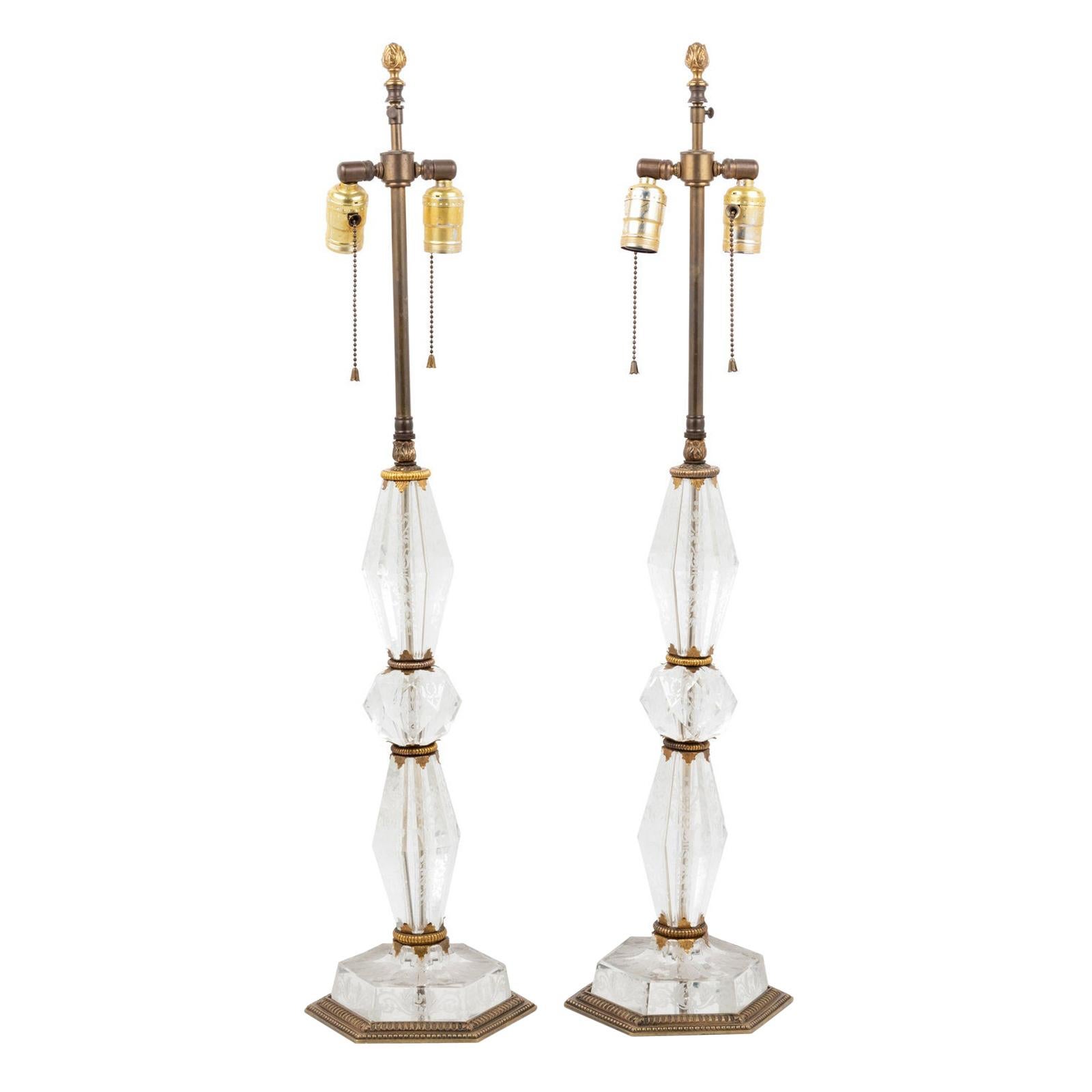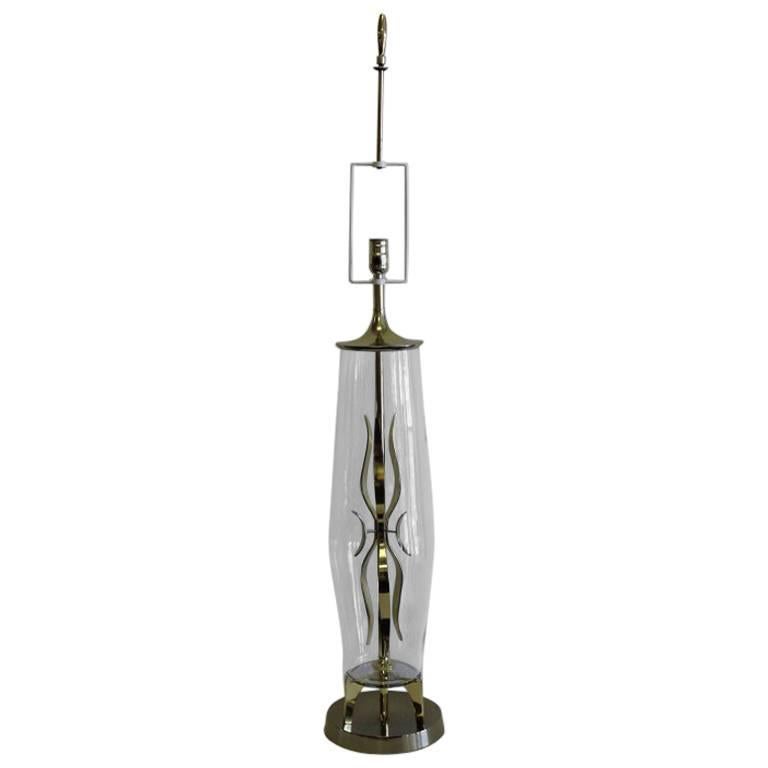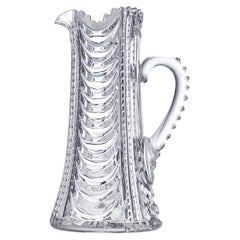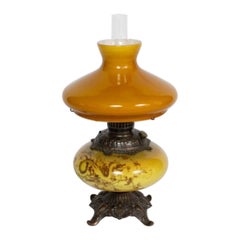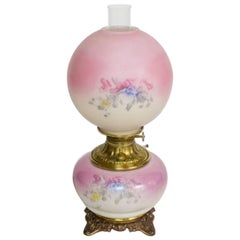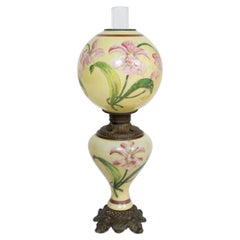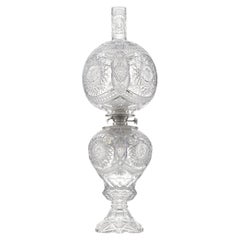
Gone With The Wind Cut Glass Lamp Attributed To Libbey
View Similar Items
Want more images or videos?
Request additional images or videos from the seller
1 of 7
Gone With The Wind Cut Glass Lamp Attributed To Libbey
About the Item
- Attributed to:Libbey Glass Co. (Maker)
- Dimensions:Height: 33.75 in (85.73 cm)Width: 11 in (27.94 cm)Depth: 11 in (27.94 cm)
- Style:Other (In the Style Of)
- Materials and Techniques:
- Place of Origin:
- Period:
- Date of Manufacture:Circa 1895
- Condition:
- Seller Location:New Orleans, LA
- Reference Number:Seller: 31-77981stDibs: LU891135666212
About the Seller
5.0
Recognized Seller
These prestigious sellers are industry leaders and represent the highest echelon for item quality and design.
Established in 1912
1stDibs seller since 2010
93 sales on 1stDibs
Typical response time: 7 hours
More From This SellerView All
- Morello Pattern Cut Glass Pitcher by LibbeyBy Libbey Glass Co.Located in New Orleans, LAThis remarkable American Brilliant Period cut glass pitcher features the exquisite pattern designed by William Marrett and patented by the Libbey Glass Co. in 1903. The quality of the glass, rarity of the pattern and astonishing refraction of light is an example of American Brilliant cut glass at its absolute best. The Libbey Glass Company was the foremost and most respected producer of the best cut glass of the Brilliant Period. From its very inception, the Libbey Glass Company assumed and maintained a prominent position, considered second to none in the production of premium American glass. The company was founded in 1818 in Cambridge, Massachusetts and was known as the New England Glass Company. In 1878, William L. Libbey leased the company, changing the name to the New England Glassworks, LLC, Libbey and Sons, Proprietors. His son, Edward Drummond Libbey, took over the operation in 1883 and, in 1888, he closed the Massachusetts factory and moved to Toledo, Ohio, renaming the company the Libbey Glass Company. Libbey became the largest cut glass factory in the world during the Brilliant Period (1878-1915). The company's incredible exhibit at the 1893 Chicago World's Fair propelled Libbey's worldwide reputation. They brought 130 of their most skilled craftsmen to blow and cut glass, awing spectators by demonstrating the complicated and precise process of transforming raw molten glass into dazzling works of art. Today, examples of Libbey cut glass...Category
20th Century American Pitchers
MaterialsGlass, Cut Glass
- Delphos Salad Bowl Set by LibbeyBy Libbey Glass Co.Located in New Orleans, LAComprised of a platter and serving bowl, this incredibly intricate salad set was crafted in the desirable Delphos pattern by the Libbey Glass Company. Stunning fields of diamonds are cut with immense precision, making this pattern one of the most dazzling American Brilliant Period cut glass patterns ever created. A banana bowl adorned in the Delphos pattern is featured in Rarities in American Cut Glass by Herbert Wiener and Freda Lipkowitz on page 19. The bowl and platter bear the Libbey acid-etched mark. The Libbey Glass Company was the foremost and most respected producer of the best cut glass of the Brilliant Period. From its very inception, the Libbey Glass Company assumed and maintained a prominent position, considered second to none in the production of premium American glass. The company was founded in 1818 in Cambridge, Massachusetts and was known as the New England Glass Company. In 1878, William L. Libbey leased the company, changing the name to the New England Glassworks, LLC, Libbey and Sons, Proprietors. His son, Edward Drummond Libbey, took over the operation in 1883 and, in 1888, he closed the Massachusetts factory and moved to Toledo, Ohio, renaming the company the Libbey Glass Company. Libbey became the largest cut glass factory in the world during the Brilliant Period (1878-1915). The company's incredible exhibit at the 1893 Chicago World's Fair propelled Libbey's world-wide reputation. They brought 130 of their most skilled craftsmen to blow and cut glass, awing spectators by demonstrating the complicated and precise process of transforming raw molten glass into dazzling works of art. Today, examples of Libbey cut glass...Category
Antique Late 19th Century American Other Glass
MaterialsCut Glass
- Gallé Cameo Glass Table LampBy Emile GalléLocated in New Orleans, LAStatuesque and artfully etched, this exquisite cameo glass table lamp is the work of the famed Art Nouveau master Émile Gallé, one of the most highly regarded names in French glassmaking. The artist's appreciation of nature is on full display in the detailed Marguerite daisy pattern carefully etched in varying layers of colored glass. The blooms dance across the lamp's amber-colored form in mesmerizing shades of purple and red. When lit, the lamp emits an enticing warm glow. Nearly two feet in height, the lamp is much larger than is typical of Gallé's pieces, yet it maintains its grace and proportion. Émile Gallé opened a small woodworker's shop in 1885, where he began experimenting with marquetry in furniture and naturalistic glass designs. In 1889, he displayed his new glass creations at the Paris International Exhibition, where the designs and colors not previously seen caused an immediate sensation. The new style of Art Nouveau had begun to appear, and the movement's aesthetics and devotion to nature appealed greatly to the young Gallé. In 1894 Gallé built a manufacturing plant in Nancy and began creating his own designs from inception through production. Gallé personally developed many of the designs, and he was known to actively make alterations and approve the designs of his talented team of designers and craftsmen he employed at the "Cristallerie D'Emile Gallé." Signed "Gallé" on shade and base Circa 1920 Literature: A. Duncan, G. de Bartha, Glass by Gallé, London, 1984, p. 170, pl. 245 for another lamp of this model A. Duncan, G. de Bartha, Gallé Lamps...Category
20th Century French Art Nouveau Table Lamps
MaterialsGlass
$64,500 - Gallé Cameo Glass Table LampBy Emile GalléLocated in New Orleans, LAThis stunning cameo glass lamp displays the unparalleled artistry of the famed Art Nouveau master Émile Gallé, one of the most highly regarded names in French glassmaking. The artist...Category
20th Century French Art Nouveau Table Lamps
MaterialsGlass
$49,050 - Gallé Cameo Glass Table LampBy Emile GalléLocated in New Orleans, LAThis exquisite cameo glass table lamp is the work of the famed Art Nouveau master Émile Gallé, one of the most highly regarded names in French glassmaking. The artist's appreciation ...Category
20th Century French Art Nouveau Table Lamps
MaterialsGlass
$29,850 - Cameo Glass Lamp By Émile GalléBy Emile GalléLocated in New Orleans, LAÉmile Gallé is one of the most highly regarded names in French glassmaking, and his cameo lamps are among his most coveted creations. Delicately etched with a motif of blossoms and l...Category
20th Century French Art Nouveau Table Lamps
MaterialsGlass, Art Glass, Cut Glass
You May Also Like
- Amber Glass Electrified Gone with The Wind LampLocated in Canton, MAGone with the wind lamp with amber glass, and a dragon design. Material: Metal,Glass Style: Traditional, Victorian Place of Origin: United S...Category
Antique Late 19th Century American Victorian Table Lamps
MaterialsGlass
- Pink Gone with The Wind LampLocated in Canton, MAPink gone with the wind lamp. Blue and pink flowers. Material: Brass, Glass Style: Victorian,Cottage Place of Origin: United States Period mad...Category
Antique Late 19th Century American Victorian Table Lamps
MaterialsGlass
- Hand Painted Gone with The Wind Lily LampLocated in Canton, MAHand painted base and shade. Cream glass painted with pink lilies. Material: Glass,Brass Style: Traditional, Victorian Place of Origin: United States Period made: Late 19th Cen...Category
Antique Late 19th Century American Victorian Table Lamps
MaterialsGlass
- Blue Gone with the Wind Lamp with Autumn LeavesLocated in Canton, MABlue gone with wind lamp. Handpainted with Autumn Leaves. Labeled “Success.” 10? Globe shade with yellow frost. Candelabra socket. Material: Bra...Category
Antique Late 19th Century American Victorian Table Lamps
MaterialsGlass
$840 Sale Price20% Off - Antique Brass & Cranberry Glass Gone With The Wind Floral Embossed Lamp c1890Located in Big Flats, NYAn antique Gone-With-The-Wind (GWW) table lamp offers cranberry glass font and globe with cast brass frame; electrified; c1890 Measures - 23.5"h x 9.5"diam Catalogue Note: Ask abou...Category
Late 20th Century American Table Lamps
MaterialsBrass
$600 Sale Price20% Off - Antique Victorian Parlor Gone with the Wind Converted Oil Lamp FloralLocated in Dayton, OHAntique Gone with the Wind oil lamp (converted to electric) featuring a lightly tinted, ruffled top, milk glass shade, and a milk glass rese...Category
Antique Late 19th Century Victorian Table Lamps
MaterialsBrass
Recently Viewed
View AllMore Ways To Browse
Libbey Glass Company
Lumina X
Nova Vintage Table Lamp
Orthodox Lamp
Robert Kuo Light
Roger Rougier On Sale
Saffo Artemide
Shell Encrusted Lamp
Sottsass Valigia
Tiffany Studios Harp Desk Lamp
Vintage Lamos
Vintage Lavendar
Vintage Parfume
Waterlily Table
1930 Tiffany Lamp
1960 Pottery Lamps Etched
Ceylon Et Cie
Crab Dining Table Design
